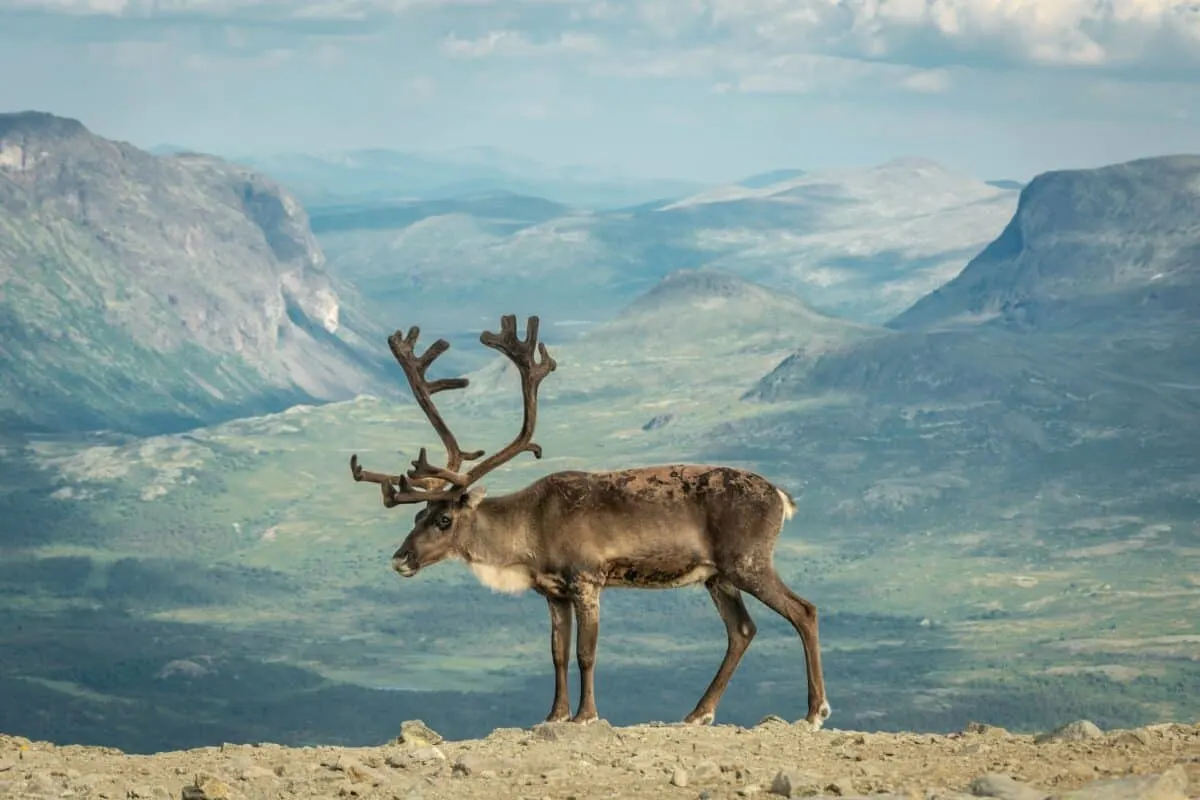We’ve compiled a list of our top ten snow animals that don’t just survive in the snow; they thrive.
Are you looking for a fun escape from the winter chill? Look no further than these fantastic snow animals! From furry mammals to colorful waterfowl, this list has it all.
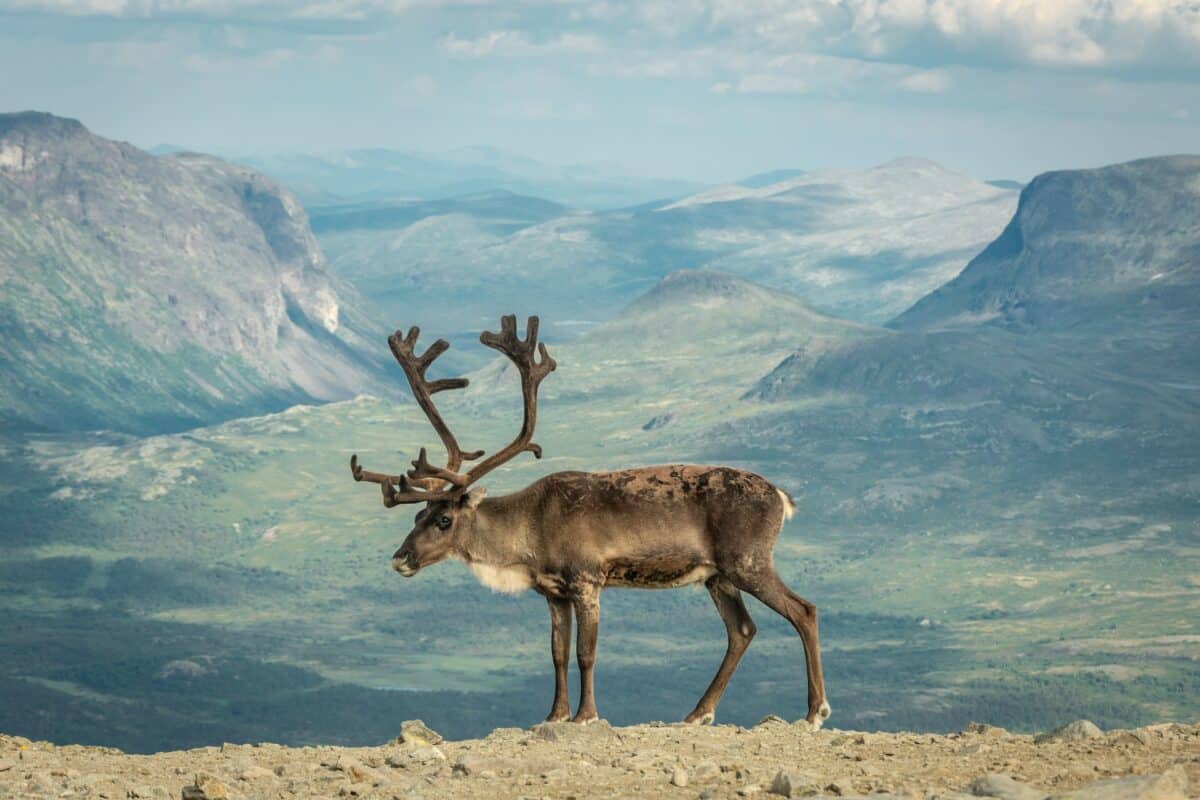
Catch a glimpse of some of the most spectacular species in nature and be dazzled by the adaptations that allow them to survive and thrive in freezing temperatures.
Whether you’re an outdoor explorer, wildlife enthusiast, or just curious about what makes snow animals so unique, our Top 10 Snow Animals will have something to fascinate you. So grab your woolly hat, and let’s explore!
#1 Polar Bear
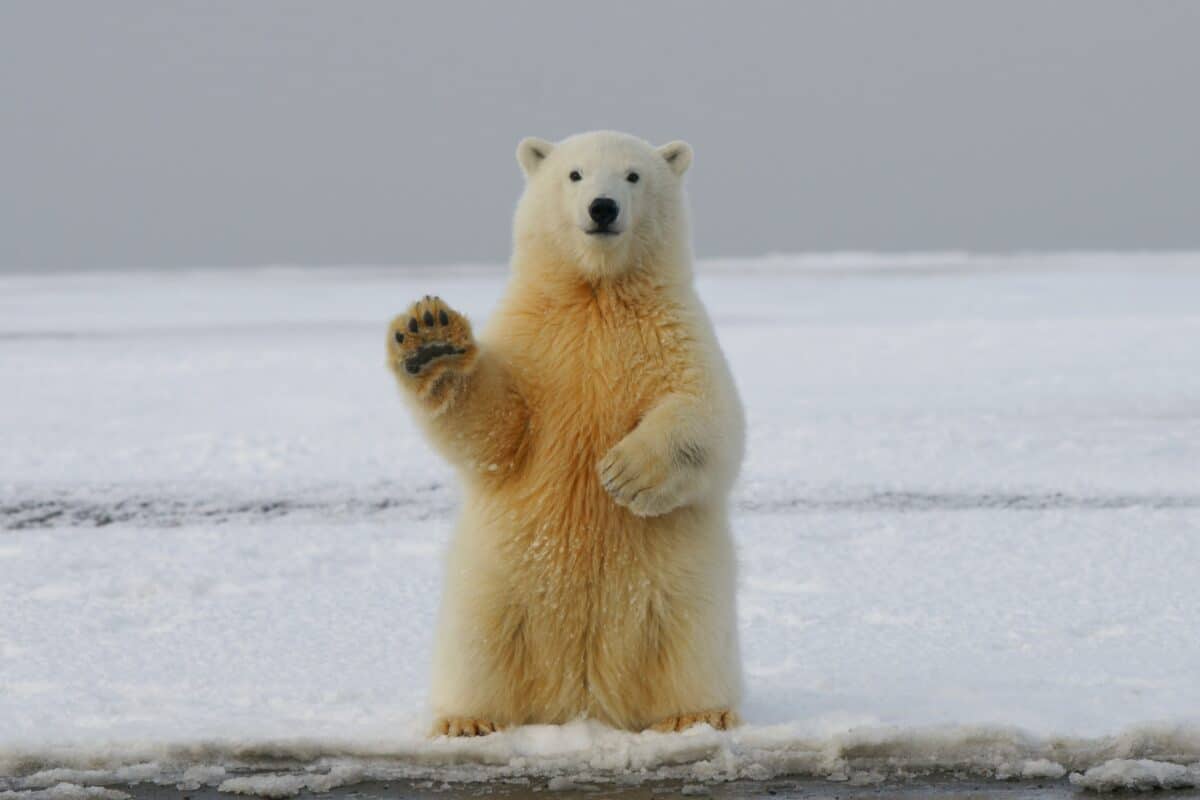
Polar bears are remarkable animals well adapted to living in the harsh and snowy conditions of the Arctic.
They are the largest land predators in the world and are considered the kings of snow animals. With their thick fur coats, they are ideally suited to keeping warm in freezing temperatures.
Their large paws are also incredibly useful for walking on ice and hunting. When it comes to hunting, polar bears are experts at catching their prey, which includes seals and other marine animals.
Despite their massive size and strength, polar bears are surprisingly agile and can swim long distances. These incredible animals are indeed a wonder of the Arctic and are a sight to behold in their natural habitat.
#2 Arctic Fox
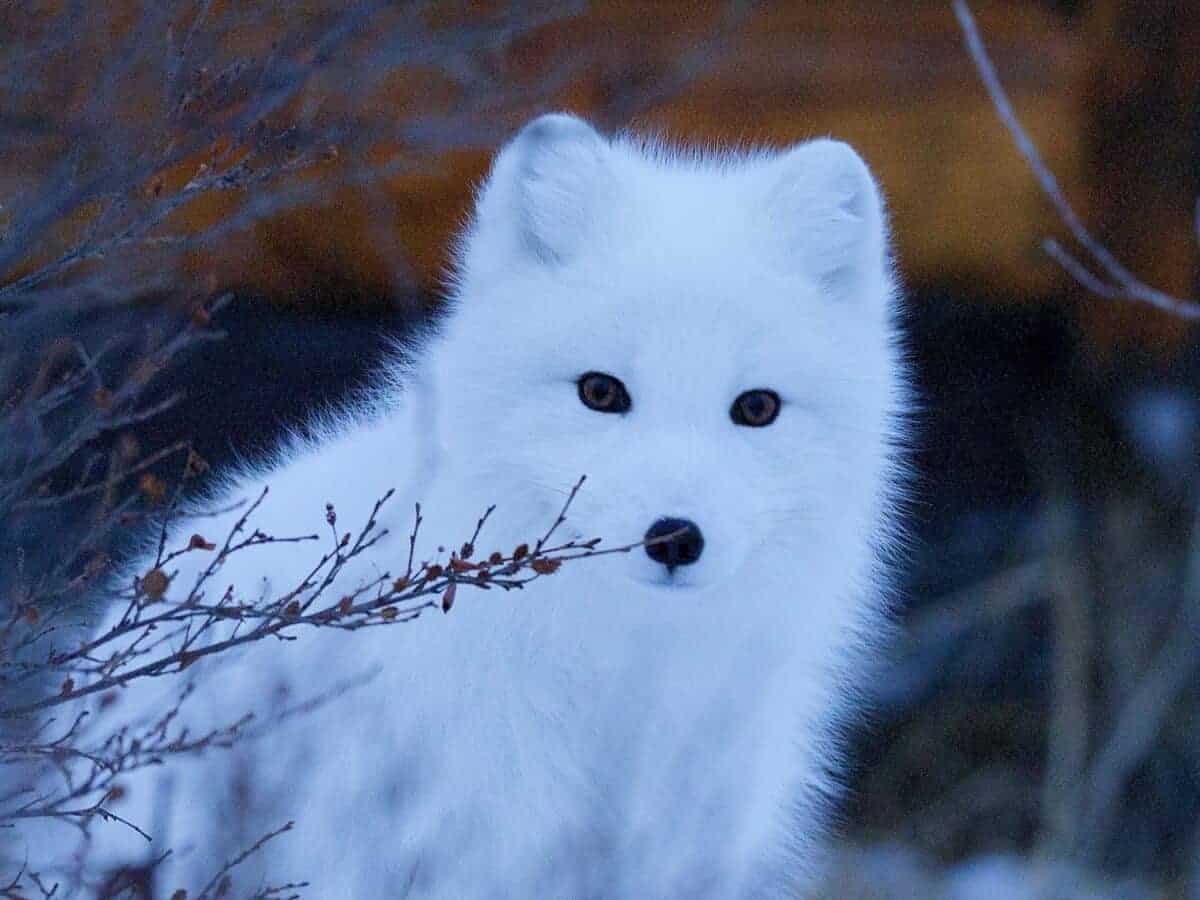
The Arctic Fox is the ultimate survivor. Living in one of the harshest environments on the planet, they have adapted in remarkable ways.
These incredible creatures are not just expert climbers; they’re also masterful hunters, thriving in some of the harshest winter conditions on Earth, where temperatures plummet to a bone-chilling -94°F. But here’s the real kicker: they don’t just survive; they thrive even when the mercury drops to a staggering -120°F.
What’s their secret? It all comes down to their fur game. Picture this: beneath their sleek exterior, they’ve got this plush, air-trapping undercoat that’s like wearing a toasty down jacket. On top of that, they rock a water-repellent outer layer that’s basically their winter coat’s armor, warding off the snow and icy gusts with style.
#3 Snowy Owl
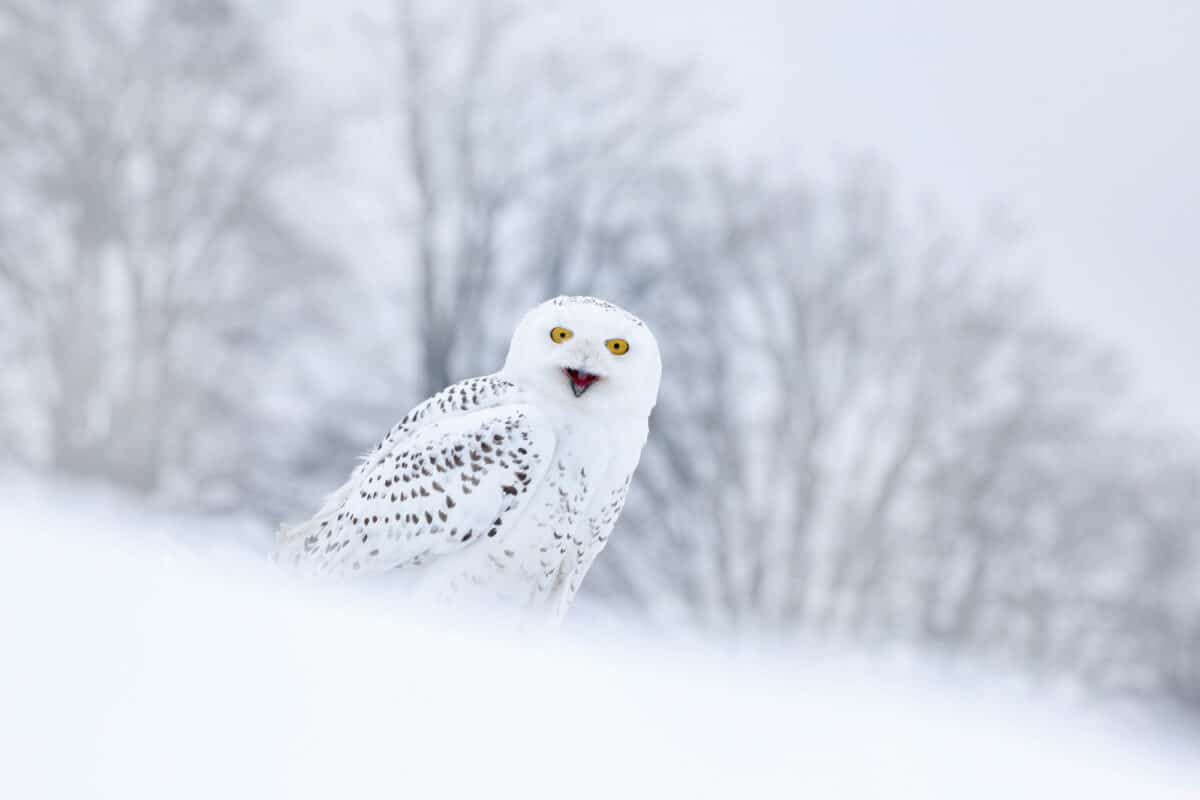
The Snowy Owl, also known as the Arctic Owl, is a majestic creature adapted to hunt in the snowy tundras of the far north. Its snowy white feathers work like camouflage, allowing it to blend in with its surroundings and sneak up on unsuspecting prey.
With a wingspan of up to five feet, the Snowy Owl is an impressive sight, whether perched atop an icy mountain top or soaring over a vast expanse of tundra. As one of the largest species of owl, these birds of prey are indeed a wonder of the animal kingdom.
You might also like: The Cutest Baby Animals You’ll Ever See
#4 Reindeer
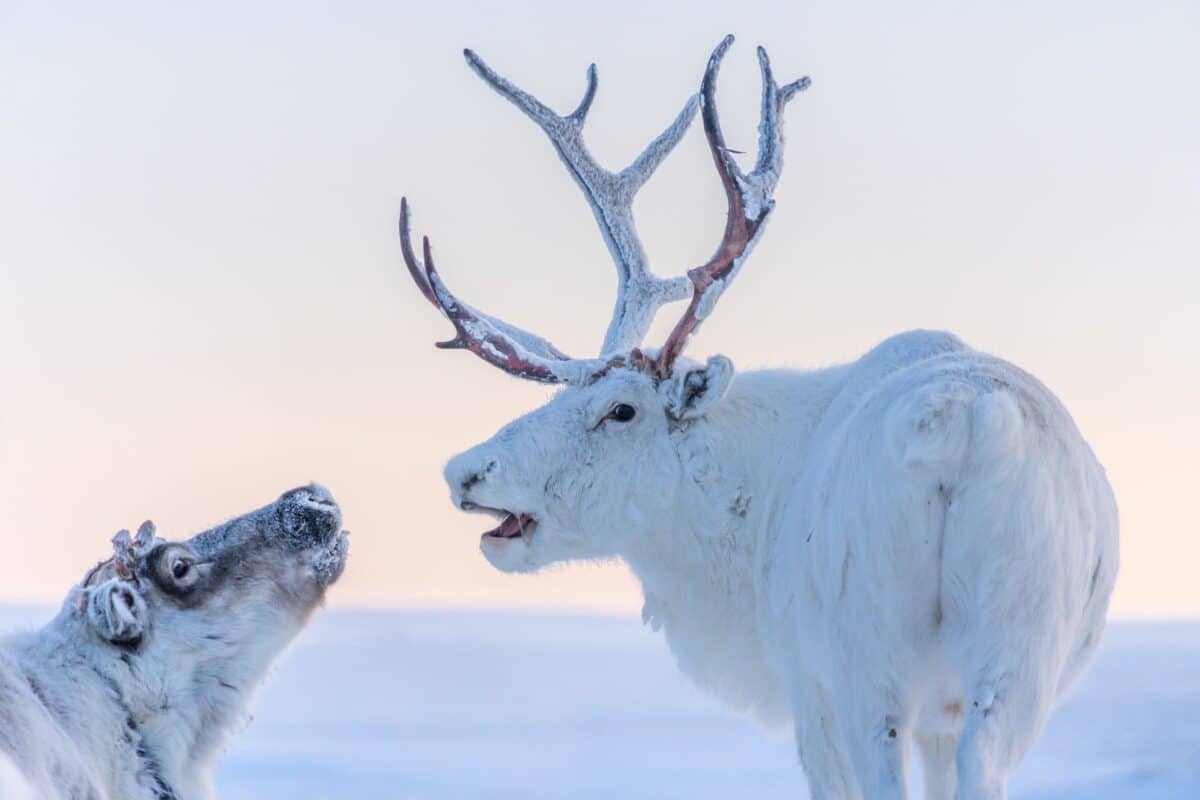
In the realm of iconic Christmas creatures, reindeer have always stolen the spotlight. These regal beings aren’t just famous for their magnificent antlers; they also boast an extraordinary endurance that’s nothing short of legendary.
Whether they’re hauling Santa’s sleigh or wandering across the vast Arctic wilderness, reindeer effortlessly cover vast distances. It’s no wonder they’re closely associated with the magic and joy of Christmas, evoking a captivating sense of wonder as they gracefully bound through snowy landscapes.
But here’s where the real marvel lies: the reindeer’s survival in these unforgiving conditions is a testament to its clever adaptations. Their hooves play a pivotal role, expanding during summer to provide solid grip on soft terrain and contracting in winter to reveal razor-sharp edges, perfect for excavating through layers of snow and ice in search of nourishment.
#5 Arctic Wolf
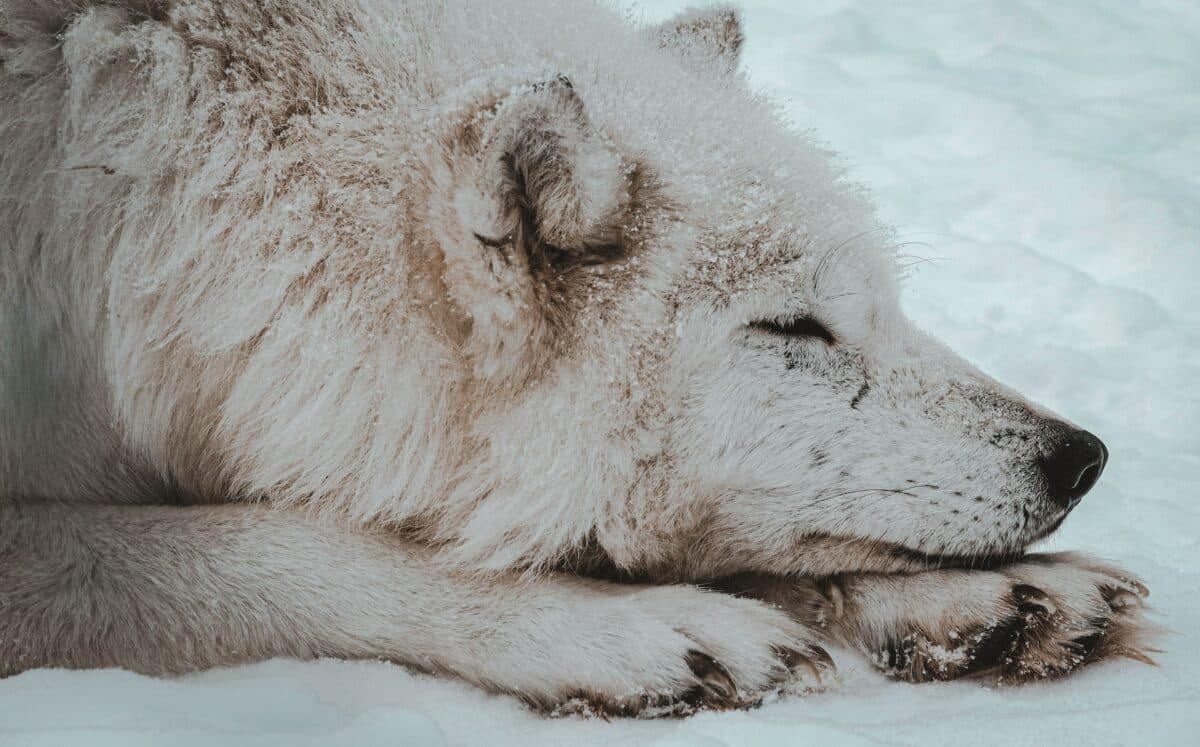
The Arctic Wolf is a true survivor of the coldest and harshest environments on the planet. With the ability to withstand temperatures as low as -76 degrees Fahrenheit, these wolves are a sight to behold.
But beyond their rugged exterior lies a complex communication system that allows them to thrive in such extreme conditions. Arctic Wolves can communicate with each other using their iconic howls across vast expanses of snow and ice, creating a network of communication essential for their survival.
Its paws are specially adapted with thick, tough pads and fur-covered toes. These adaptations serve multiple purposes. Firstly, the thick pads provide insulation, preventing the wolf’s paws from freezing when walking on snow or ice. They also provide traction, allowing the wolf to navigate slippery surfaces more effectively.
#6 Emperor Penguin
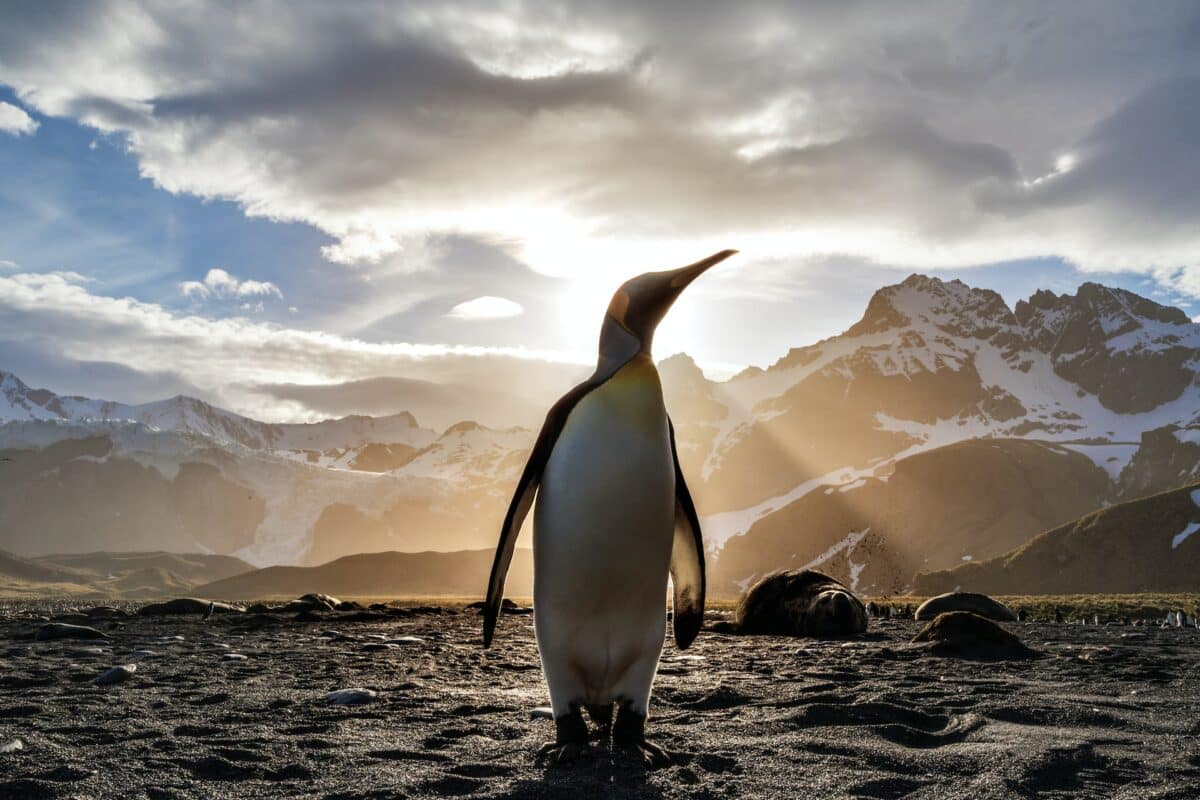
The emperor penguin, a symbol of unwavering tenacity and remarkable adaptations, embodies the essence of survival in the world’s most brutal cold. These majestic beings call the harshest place on Earth home—the unforgiving expanse of the Antarctic.
At the core of their ability to endure lies a vital adaptation: a substantial layer of blubber. This blubber isn’t just an extra layer; it’s a fortress of insulation, a guardian against the bone-chilling Antarctic waters. Beyond retaining precious body heat, it’s a strategic energy reserve, sustaining them during extended periods of food scarcity.
But the emperor penguins don’t stop there. They’re equipped with a lavish plumage arrangement that’s nothing short of genius. Each feather is like a perfectly crafted piece of armor, tightly packed and layered to create a waterproof and windproof shield. This ingenious feather fortress keeps them dry and snug, effectively sealing warmth within and warding off the relentless cold.
Also Read: 17 Animals That Mate For Life
#7 Snowshoe Hares

Meet the snowshoe hares, the true winter champions! These adorable critters boast some incredible adaptations that make them the undisputed snow experts of the animal kingdom. Among these adaptations, their fur game takes center stage.
As autumn turns the landscape into a snowy wonderland, these hares undergo a remarkable transformation. Their fur, once rusty brown, undergoes a magical shift to a pristine winter white. This change is all thanks to a reduction in melanin pigment in their hair fibers. With their snowy-white coats, they practically vanish into the wintry backdrop, becoming masters of camouflage as they evade the watchful eyes of predators like lynxes and coyotes.
But here’s where it gets even cooler: as the seasons shift and the snow melts away, these hares are quick to adapt. Their fur undergoes another makeover, transitioning to a more subdued brown or grayish hue, seamlessly blending with the changing surroundings. This chameleon-like ability to change fur color not only keeps them hidden but also elevates their odds of survival in the frigid icy realms they call home.
You might also like Coral Reef – All Animals.
#8 Muskoxen
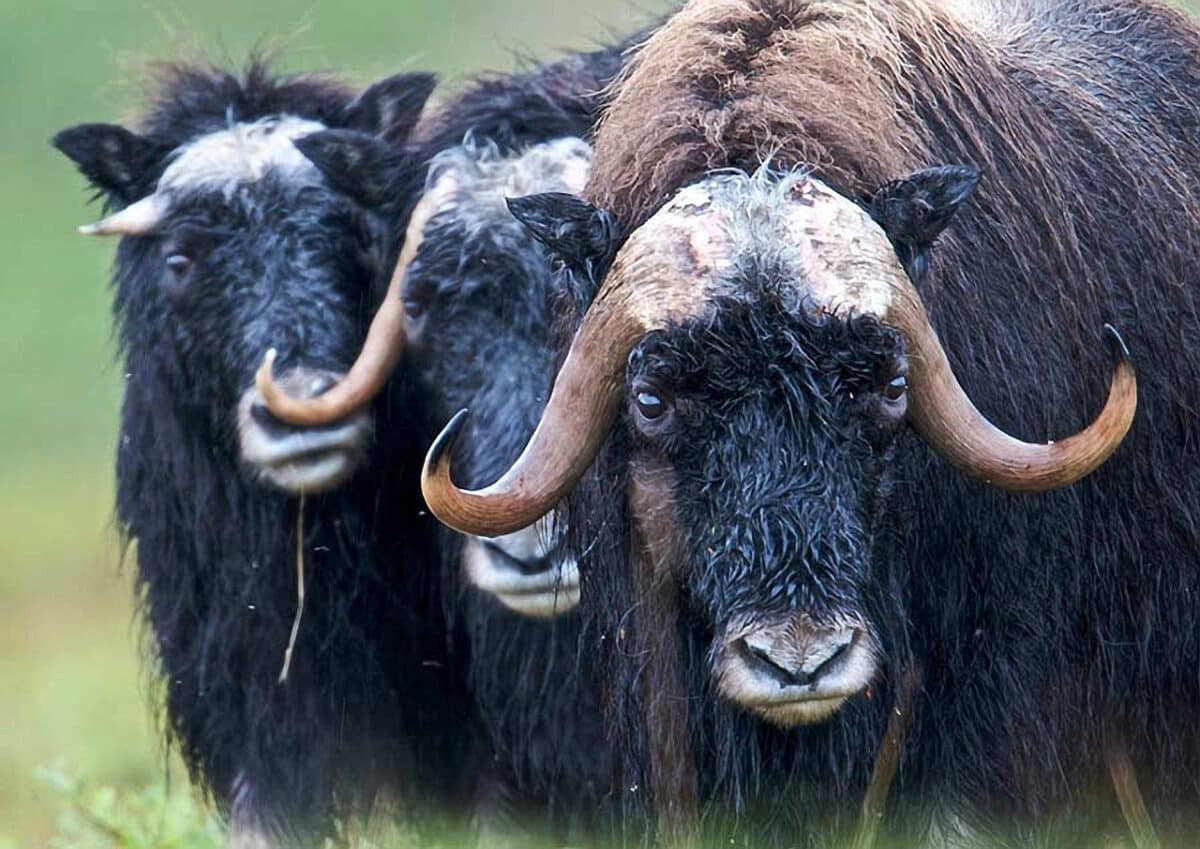
Muskoxen are fascinating creatures that exhibit numerous social behaviors and migration patterns.
These giant, hairy beasts are known for forming groups, or herds, and for relying on their herd mates for protection against predators such as wolves. Interestingly, herd members will position themselves in a circle, with their heads facing outward, to ward off potential attackers.
Additionally, muskoxen migrate during winter to escape harsh weather conditions and find new grazing areas. These migrations can take them hundreds of miles, often on arduous terrain.
#9 Ermine
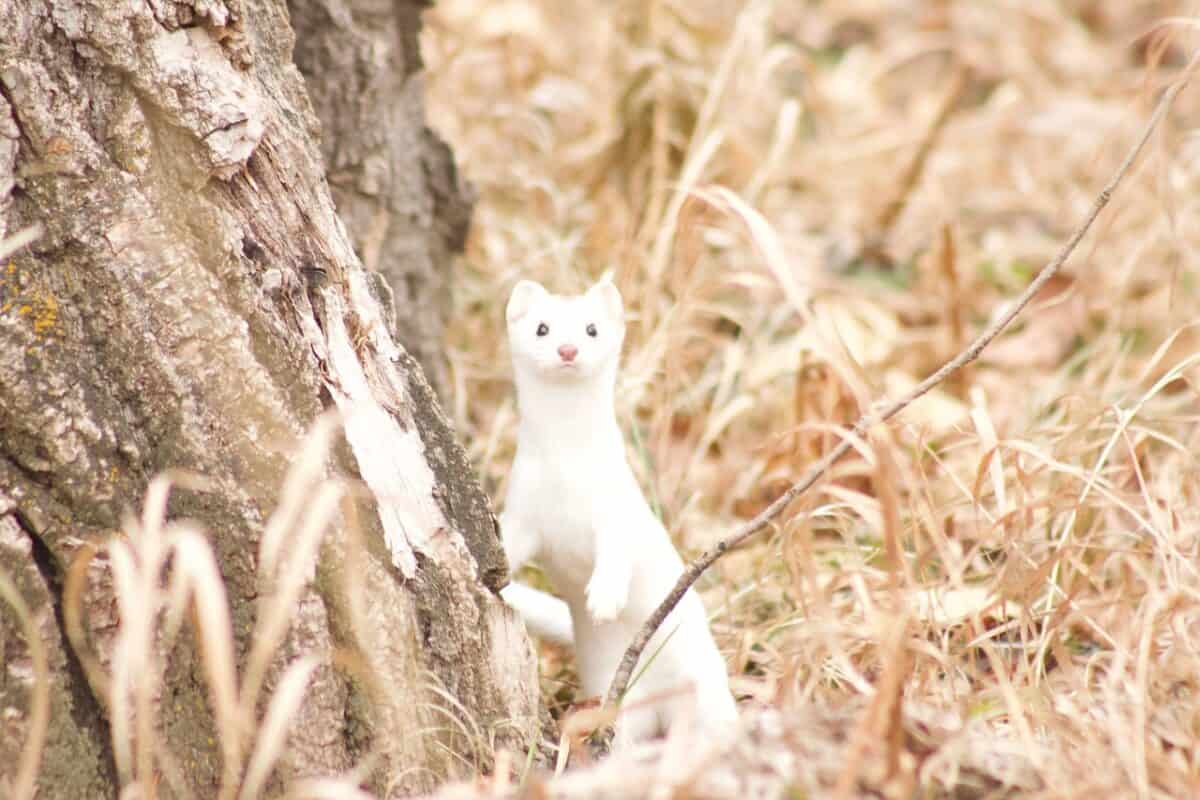
Ermine, also known as stoats, are the pint-sized predators of the snowy realm, and they are nothing short of impressive. These agile little critters are masters of the snowy landscape, with a knack for burrowing and crafting cozy dens beneath rocks and trees.
But don’t be fooled by their size; these ermines pack a punch when it comes to their appetite. They’ve got an insatiable hunger for mice and voles, and they’re not just casual hunters; they’re precision experts, navigating the deep snow with finesse. What really seals the deal for them is their winter coat, which is a pure, snowy white marvel. It’s like a cloak of invisibility, allowing them to seamlessly blend into their wintry surroundings, turning them into formidable adversaries for their unsuspecting prey.
So, when you encounter an ermine in the snow, remember, they may be small, but their prowess in this frozen landscape is nothing short of extraordinary.
#10 Mountain Goat
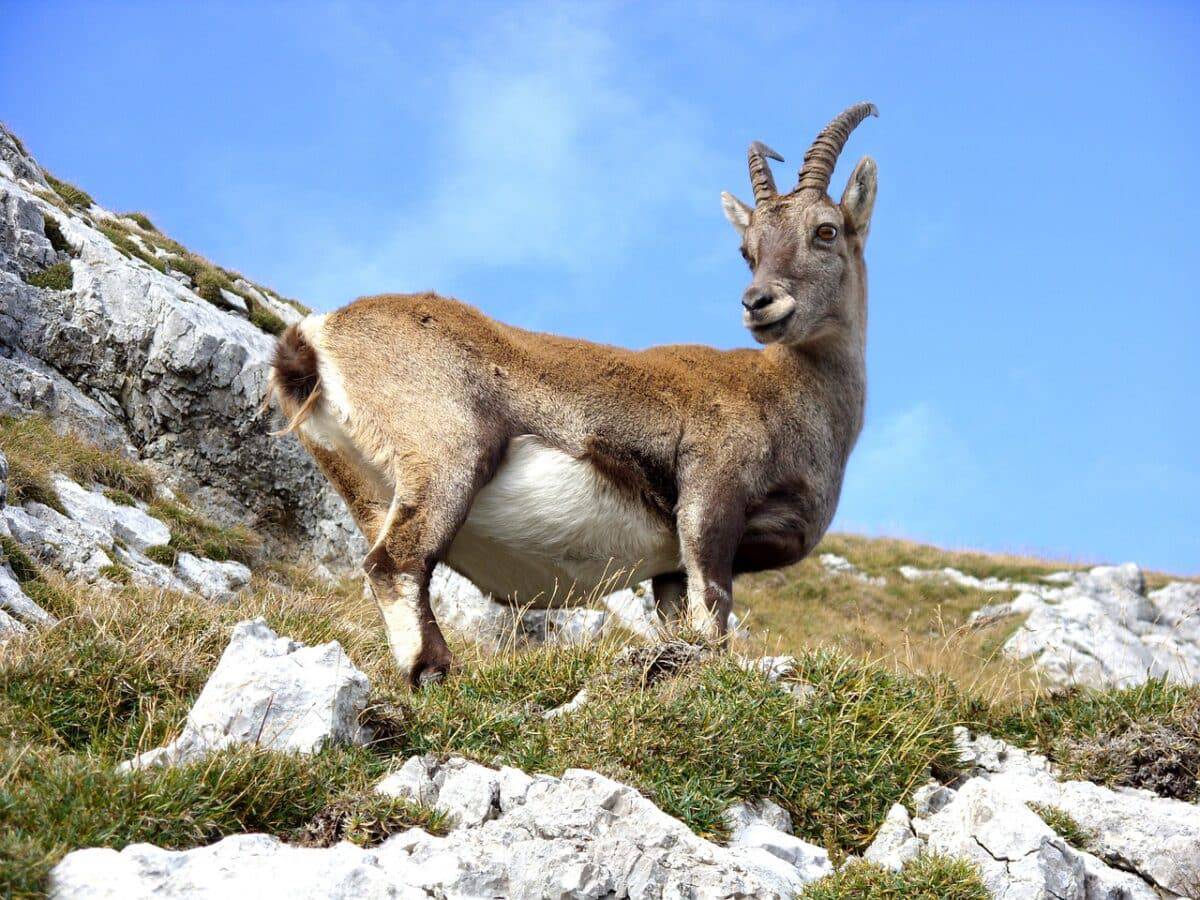
If you’ve ever seen a mountain goat gracefully leaping across treacherous snow-covered terrain, you might wonder how they do it without slipping.
These incredible animals have evolved to become ideally suited to their harsh environment, with powerful legs, short but stable hooves, and a keen sense of balance. Mountain goats have a unique feature on their feet that few other animals possess: a tough outer layer that sheds in the summer to reveal sharper, grippy inner layers for the winter.
Thanks to these adaptations, mountain goats can confidently and efficiently bound across icy ledges and steep slopes, making them one of the most impressive creatures of the rocky mountain range.
Frequently Asked Questions
Various animals can walk on snow, including certain bird species like ptarmigans and snowy owls, as well as mammals such as snowshoe hares, arctic foxes, and polar bears, which have adaptations to navigate snowy terrain.
The lemming, a small rodent, is known to live in snowy habitats, particularly in Arctic regions. Lemmings are well-adapted to the cold and have behaviors that allow them to survive in harsh snowy environments.
Animals may enjoy snow for various reasons. It can provide insulation from the cold, camouflage for hunting or avoiding predators, and a source of water when it melts. Some animals, like certain bird species, also find snow-covered areas rich in food resources.
Animals that can turn white in snow include species like the Arctic hare, ptarmigans, and ermines (also known as stoats or short-tailed weasels). This adaptation, called seasonal camouflage or winter coat, helps them blend into the snowy environment, providing them with protection and increasing their chances of survival.
Top 10 Snow Animals: Conclusion
From polar bears in the Arctic to snowshoe hares in the North American boreal forests, many animals have adapted their fur or feathers to survive in cold climates, and some even prefer snowy conditions.
Snow can bless these species, sheltering them from other elements, helping them find prey, and camouflage themselves against predators.
Knowing these top 10 snow animals gives us an appreciation for the winter months and the incredible adaptations that enable nature’s creatures to thrive despite cold temperatures and deep snow.
Thank you for reading this post about the top ten snow animals! If you enjoyed this, take a look at another one of our animal lists:
- Octopus Stuck to Diver’s Back and Won’t Come Off - April 25, 2024
- Magpie Bird Is Reunited with Her Dog Best Friend - April 24, 2024
- Dog Saves Another Dog From Drowning in Fish Pond - April 23, 2024

